SUSTAINABLE EVENT
ChangeNOW is recognized worldwide for its pioneering work in the field of sustainable events.
Today, ChangeNOW is recognized worldwide for its pioneering work in the field of sustainable events. Since the beginning, five years ago, we champion change and therefore, are leading the next generation of sustainable event organizations.
Respect for the environment, waste reduction, and social inclusion are cornerstones of the ChangeNOW Summit. As the largest event of solutions for the planet, with more than 33,000 attendees in 2022, it has become a laboratory for experimenting with sustainable events. Year after year, Summit after Summit, ChangeNOW’s three founders, and in particular Rose-May Lucotte (COO), have constantly tested new solutions and paved the way for a more eco-friendly Summit :
From the event design, based on the circular economy model, to measuring and planning for carbon emissions reduction ; every aspect of the Summit is designed towards sustainability.
This forward-thinking approach was recently recognised : as for ChangeNOW Summit 2022, we were the largest event awarded with the 2nd level of the EEE eco-event label certification created by the eco-event network, REEVE.
REEVE, Réseau Eco-Evenement, or in English Eco-Event Network, works on supporting all the players in the event industry in their ecological transition. Certification is based on a list of 100 commitments for a sustainable and inclusive event. ChangeNOW Summit validated more than 55 of them.
8 pillars for an eco-friendly event by ChangeNOW
Pillar 1 - Resources
During any event, resources are widely used: energy, water, paper, etc. Every effort should be made to reduce their use as much as possible.
What we did:
Our eco-responsibility approach is based on the 5 R’s of the circular economy, which are: Reject, Repair, Reuse, Reduce, and Recycle. The entire design of the event is deeply rooted in this approach.
The infrastructure, furniture, and signage seen at the Summit were borrowed or reused from previous events. To avoid plastic, all participants’ badges were made of mineral paper, designed by Paper on the Rocks. Thanks to the company La Tête Dans Les Nuages, all the tarps were recycled into ottomans. Co-Recyclage reused all the materials needed for the scenography.
The use of paper was limited mainly, as we avoided printing as much as possible, and what we did end up using was eco-designed.
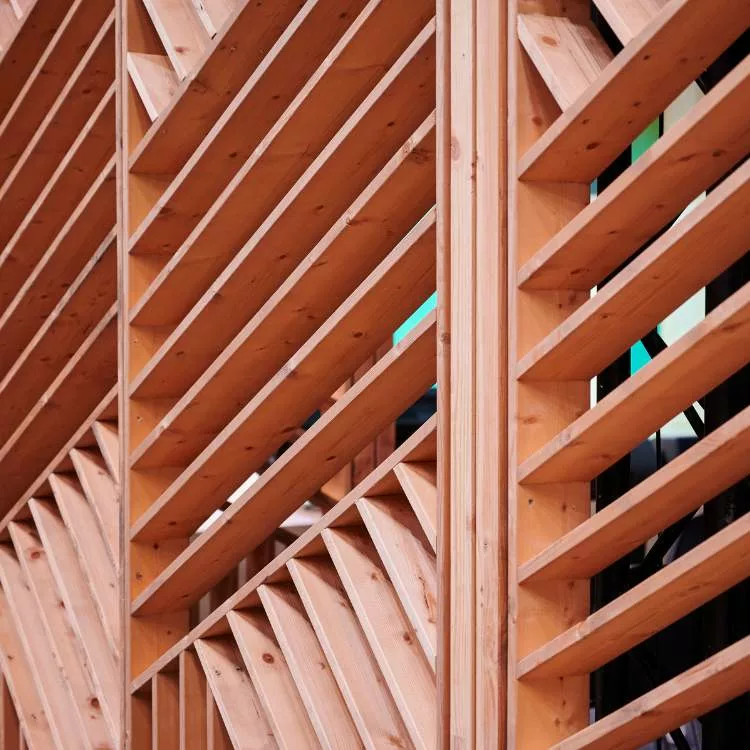
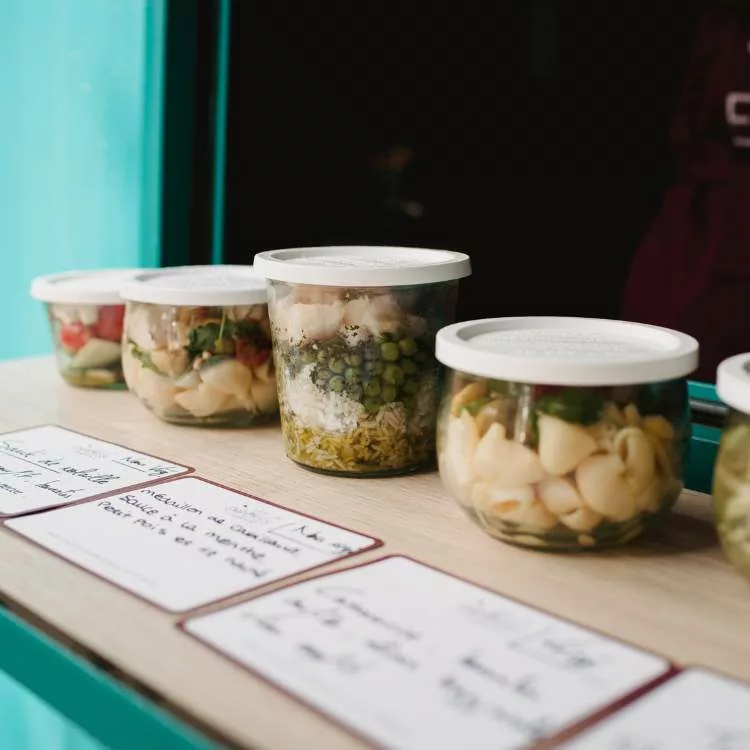
Pillar 2 - Food
Beyond its crucial environmental impact, the catering offer of an event participates mainly in the experience offered to the participants and is thus a significant level of awareness.
What we did:
All our caterers committed to using organic (or equivalent), local and seasonal products. At least one vegetarian option was offered per caterer, and more than 80% of the food served was low-carbon. All unsold food was donated. Several selected restaurateurs promoted the integration of disadvantaged people.
Pillar 3 - Wastes
Managing waste is at the heart of any responsible event, and aiming for zero waste is crucial. It starts with carrying out the fitting sorting gesture but organizing a zero-waste event also implies a lot of preparation backstage.
What we did:
First, we chose 100% compostable packaging for all food providers, which our staff personally tested and selected. Thanks to our partnership with Citeo, we built an innovative sorting system to sort all waste: bio-waste, recyclable, household, and cigarette butts.
Several volunteers were also trained to help visitors adopt the right sorting gestures, facilitating sorting and promoting understanding of the waste recovery process.
Finally, we reduced the waste at its source: no kakemonos, goodies, flyers, carpets, or plastic water bottles were present. To avoid any unnecessary waste generated by the Summit, we refused to install any carpets or decorations that could not be reused later on, contrary to many events which will throw them out afterwards.
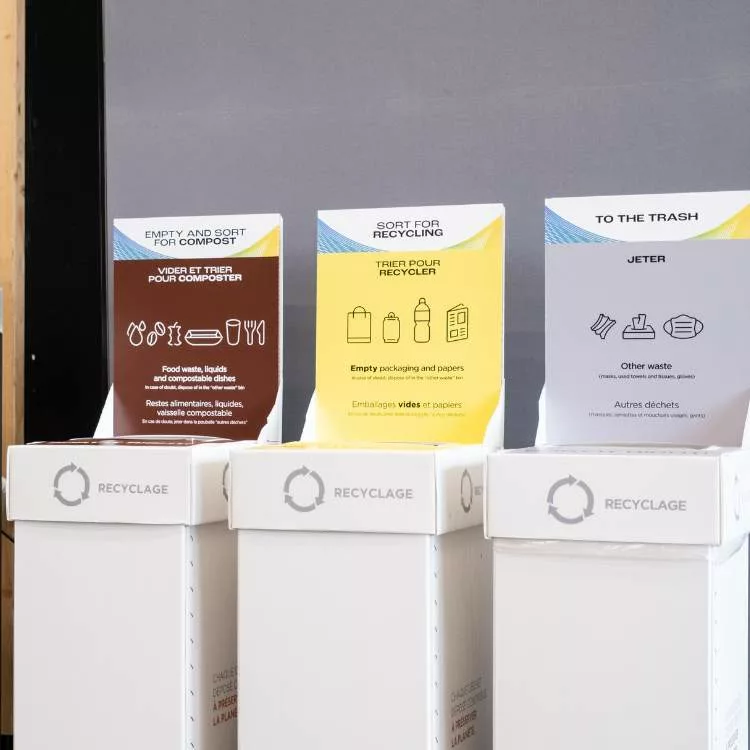
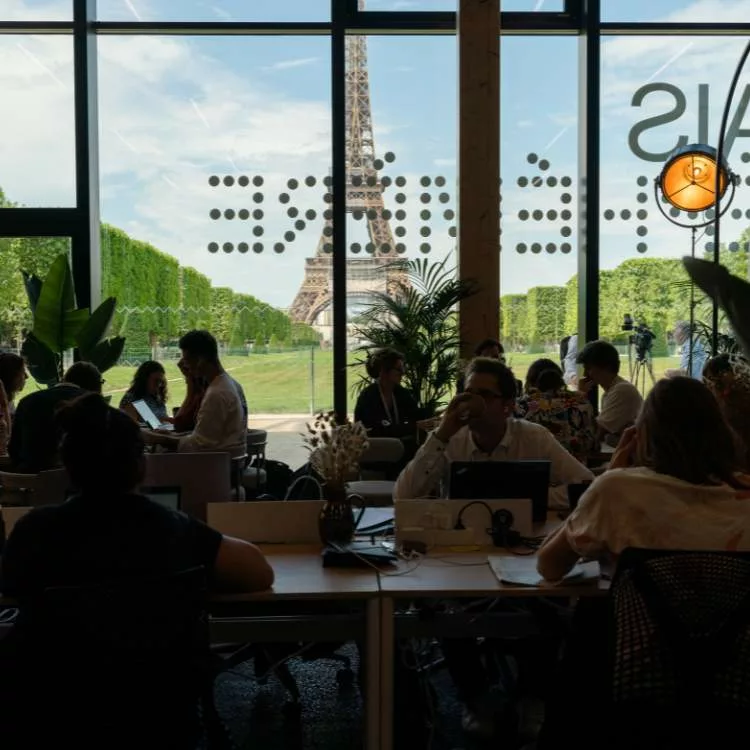
Pillar 4 - The site
To create a sustainable event, it is crucial to understand the event’s location to protect it from any negative impact the event may cause.
What we did:
As already an obvious criteria, we settled for the Grand Palais Ehpémère as it was close to public transport, and accessible to all. When leaving we ensured that the site was left in its original condition without further damage.
Pillar 5 - Travel
As the primary source of emissions during an event, it’s essential to be aware of the impact caused by traveling, to monitor it, and put in place preventive measures.
What we did:
Before the event, we informed attendees about public transportation access via our website and various forms of communication (mail, social media, newsletter, etc.). Participants were also encouraged to carpool thanks to our partnership with the carpooling application TaxyMatch where they received a 40% discount.
A parking specially dedicated to bikes was installed in front of the venue where participants could store their bikes.
Speakers and participants who traveled long-distance planned in advance their agendas in order to attend other events in France and Europe. A hybrid option was also set up, with digital access through our website for participants wishing to listen in on a conference of their choice.

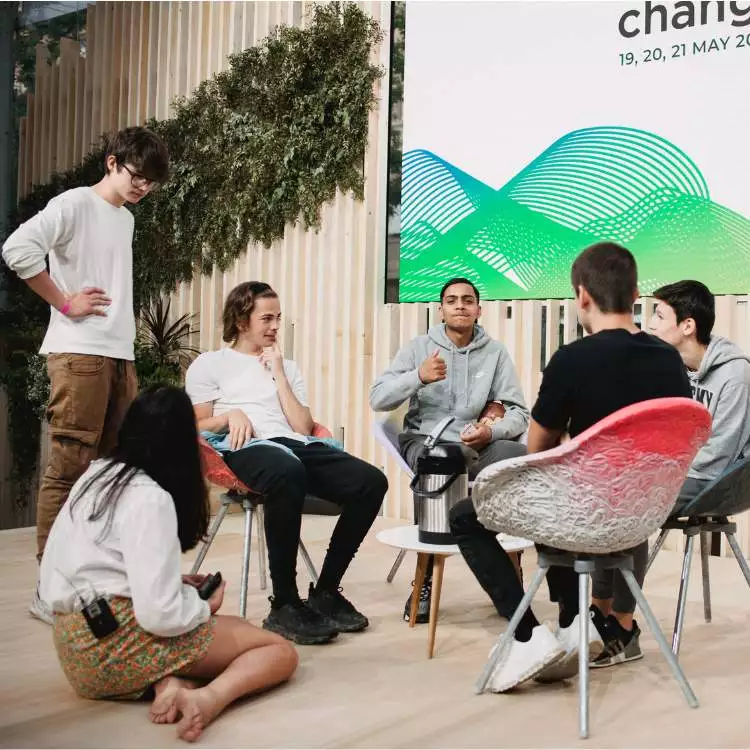
Pillar 6 - Inclusivity
Creating an event for everyone is at the heart of ChangeNOW. All those stepping through the Summit’s door should feel represented and included. Ecological transition isn’t reserved for one specific group of individuals; on the contrary, it is open to all wishing to make an impact. Everyone can be a hero of change.
What we did:
For an event to be open to all, first, we have to start with the accessibility of the venue. This feature was a primary criterion when selecting the location of the Summit. The Grand Palais Ephémère is accessible for disabled people and can accommodate live translation in several languages. An onsite system was also put in place with an instant subtitle system.
Diversity is also a key point when preparing for the event, whether it be diversity of stakeholders, culture diversity with over 117 countries represented, or gender diversity with more than 51% of women represented on stage.
Free solidarity passes for disadvantaged people were also set up. The last day of the Summit was dedicated to children through workshops and awareness-raising activities.
In addition, 70 students were hired during the Summit from the Lycée Hotelier François Rabelais-Dugny, a hotel management high school. Rose-May Lucotte selected this school in particular as it is the only public high school based in Seine Saint Denis to offer this cursus and aims to open the field possibilities for all.
Pillar 7 - Education
Inviting the audience to the ecology transition is crucial. We want to champion the change, and it starts by inspiring others.
What we did:
Art has always been an integral part of the Summit and an incredible way to convey a message. Tim Zdey’s Wall of Change is a perfect example, where a blank canvas was turned into a live wall painting as people committed to more sustainable behavior. The Earth Village was also an immersive experimentation by Onyo: a 3D sound adventure to reconnect with other species.
Workshops and awareness-raising activities were offered for children throughout the last day of the Summit, where they discovered why taking care of our planet is essential.
Parents and tutors could also drop off their children at the free daycare provided by La Fée Morgane. These little bundles of joy had a special DIY workshop just for them: a giant fresco, a nice reading space, and an exchanging area.
We also invited 300 high school students during the Summit to raise awareness around sustainability. In the program: conferences and awareness workshops organized by Ashoka and Makesense, as well as an immersion in the World Expo of Solutions. The day started with a giant icebreaker, followed by a participatory conference which was a massive success.
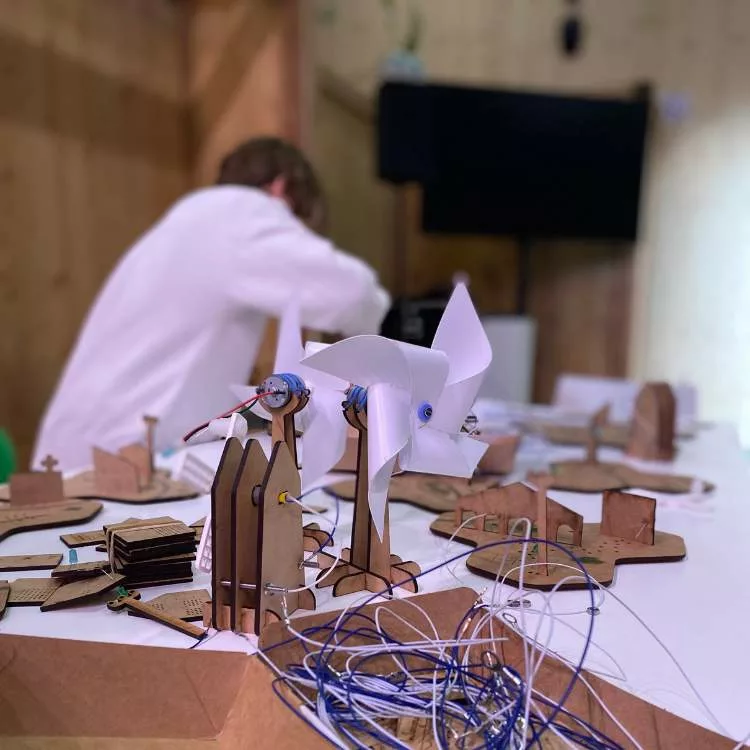
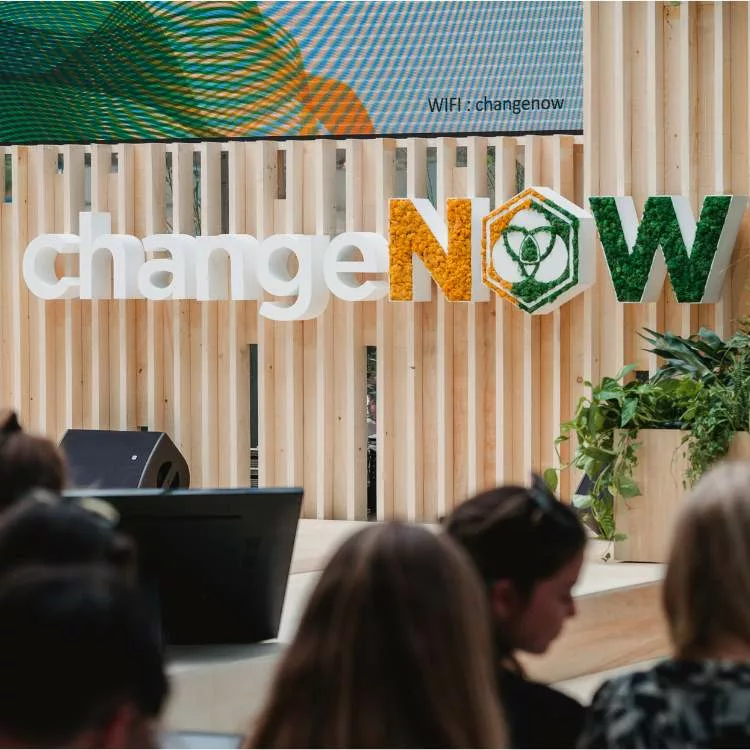
Pillar 8 - Improvement
After an event, it’s important to group back together, audit our practice thanks to Climateseed, and see where there is room for improvement.
Discover ChangeNOW summit’s Sustainable Report 2022, in partnership with Climateseed:
What are the next steps?
Reduce our GHG emissions. Therefore, we have set clear targets in line with the Science Based Target Initiative (SBTi) requirements. Once we have established these targets, we will develop a transition plan.
Contribute to carbon avoidance and sequestration projects. Even the most committed company will still emit unavoidable GHG emissions. Indeed, after implementing all possible reduction actions, a company still emits residual emissions. Therefore, we must contribute to emission reduction projects to have a positive step, which is essential for achieving global carbon neutrality.
Communicate & Involvement. We will increasingly involve our suppliers and partners in our carbon strategy. We encourage them to report and reduce their emissions. This will soon be a criterion for selecting our future partner companies.
A carbon audit is not a one-off exercise. We are tracking our progress which needs to be followed between events to ensure ChangeNOW is on track with its carbon strategy. We have a team dedicated to reducing the impact of the Summit, however, like any human activity, significant events impact their environment and the planet. Aware of this responsibility and the exemplary role imposed on ChargeNOW, our entire team acts daily to reduce the impact of all its events
Learn more about ChangeNOW 2022 Sustainability report
Summit
events
Publications
news
About

ChangeNOW is a social enterprise that accelerates the environmental and social transition.
ChangeNOW communities is a non-profit association governed by the French law of 1901. Its aim is to facilitate and organize educational, artistic, cinematographic or scientific projects of general interest that promote the protection of the natural environment.
N°RNA : W942010521
